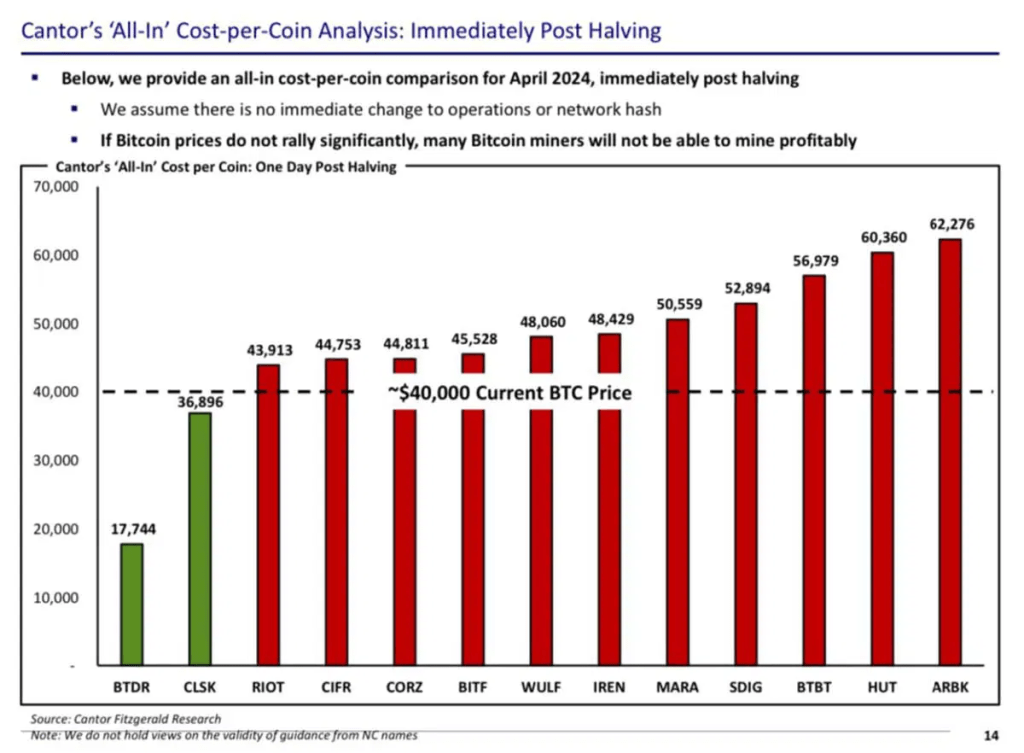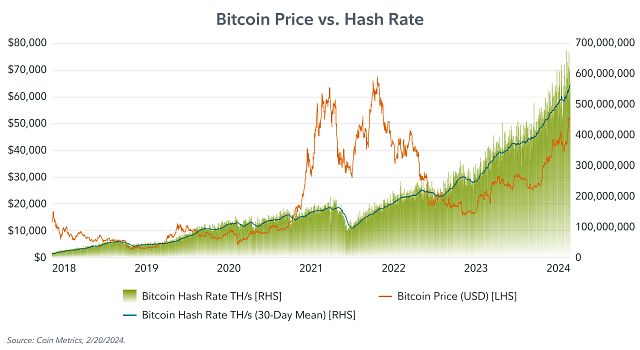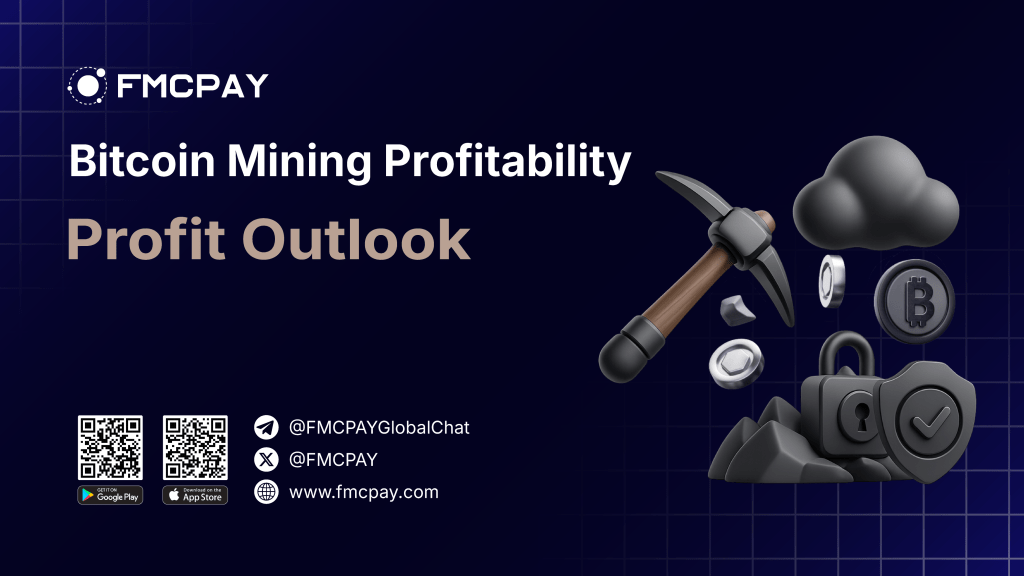With Bitcoin hovering around $107,000, the spotlight is once again on Bitcoin mining profitability in 2025. While the soaring price creates attractive revenue potential, only miners who can effectively manage energy costs, hardware efficiency, and operational strategy will stay ahead. This article explores the latest trends, metrics, and challenges shaping Bitcoin mining profitability in today’s high-stakes environment.
1. Climbing Costs and Rising Difficulty: The Pressure on Bitcoin Mining Profitability
Understanding the Key Pressures on Bitcoin mining profitability As we move through 2025, Bitcoin mining profitability remains a hot topic especially as both retail and institutional miners face intensifying operational headwinds. Although Bitcoin’s price is hovering near $107,000, mining is no longer a guaranteed win. Margins are increasingly squeezed by rising electricity rates and unprecedented network difficulty. These two factors are now the main gatekeepers of profitability in the mining sector.

1.1. Soaring Electricity Prices
Electricity has always been a defining factor in determining Bitcoin mining profitability, but in 2025 it has become even more pivotal. Recent data shows that energy expenses now account for more than 50% of total mining costs. From Q1 2024 to Q1 2025, the average global electricity rate for industrial mining operations surged from $0.041/kWh to $0.081/kWh. This dramatic increase has driven the average production cost of mining one Bitcoin above $70,000, meaning miners with outdated rigs or inefficient cooling systems are barely breaking even or even operating at a loss.
In regions without access to subsidized energy or renewable power sources, Bitcoin mining profitability is quickly becoming unfeasible. As a result, mining operations are either relocating to energy-efficient zones like Paraguay, Texas, and parts of Scandinavia, or investing in renewable infrastructure to regain competitive cost advantages.
1.2. Increased Network Difficulty
The second major challenge to Bitcoin mining profitability is soaring network difficulty, which hit a record-high of 943 EH/s in late May 2025. This spike reflects the growing number of miners joining the network and deploying next-gen ASIC rigs especially the S21 and M60 series, which are setting new standards for hashrate and efficiency.
This increase in mining difficulty directly raises the computational burden and power consumption required to earn block rewards. The average cost of mining one Bitcoin rose from $52,000 in Q4 2024 to $64,000 in Q1 2025, excluding overhead like facility maintenance or hardware depreciation. As difficulty continues to rise in response to growing global competition, only miners with optimal cost-per-terahash and efficient operations can maintain positive Bitcoin mining profitability.
Even as the block reward remains at 3.125 BTC per block post-halving, the competitive nature of mining means that profitability is not guaranteed—it must be earned through strategic cost control, technological upgrades, and smart infrastructure planning.
2. Profit Margins & Miner Insights
As the price of Bitcoin hovers above $100,000 in mid-2025, the spotlight is once again on Bitcoin mining profitability. But while headlines highlight record highs, profitability varies widely depending on geography, energy pricing, machine efficiency, and financial hedging strategies.
2.1. May Profit Surge: Price Momentum Outpaces Hashrate Growth
In May 2025, miners experienced a notable uptick in Bitcoin mining profitability, with Jefferies reporting an average 18% increase in profit margins. This was largely due to Bitcoin’s 20% price surge outpacing a relatively modest 3.5% increase in network hashrate. For miners with agile operations, this price-to-hashrate lag created an optimal window to maximize returns before the next difficulty adjustment.

This short-term profitability spike underscores an important principle in mining economics: when price gains lead network adjustments, even short-lived gaps can significantly boost Bitcoin mining profitability, especially for operators running modern, low-energy ASICs and flexible energy contracts.
Moreover, the impact was more pronounced for miners operating in regions with stable or subsidized electricity, such as Paraguay, parts of Texas, or Nordic countries where breakeven points are significantly lower. For these miners, the May rally translated into unusually high gross margins per block mined, enabling expansion or reinvestment opportunities.
2.2. Energy Margins and the Rise of Financial Hedging in Mining
As the landscape matures, savvy miners are shifting focus from just mining capacity to margin control. In 2025, one of the most important determinants of Bitcoin mining profitability is energy margin the difference between energy revenues generated and the actual energy cost per MWh.
Modern ASICs operating below 19 J/TH are currently generating around $130/MWh in energy revenue, while average operational costs remain at approximately $60/MWh. This results in an average energy margin of $70/MWh, which is significant in a high-capex, low-margin industry.
To protect and predict Bitcoin mining profitability over time, miners are increasingly using hedging tools such as:
-
Long-term power purchase agreements (PPAs) at fixed rates.
-
Hashrate derivatives and contracts (e.g., “hashspark” or futures), which let miners lock in forward revenue.
-
Tokenized treasury models, where mined BTC is periodically sold or collateralized to reduce exposure to price volatility.
These strategies are no longer niche they’re becoming standard among mid to large-scale mining farms. The use of such financial instruments has helped miners survive volatile market cycles and protect against sudden increases in energy prices or reductions in block rewards (especially post-halving).
3. Hardware & ROI: The Efficiency Game
In today’s highly competitive mining landscape, hardware efficiency has become a make-or-break factor for sustaining Bitcoin mining profitability. As network difficulty climbs and energy prices remain elevated, the gap between top-tier and outdated mining equipment has never been more stark. Choosing the right ASIC is no longer just a matter of hashrate it’s a full equation of energy cost, upfront investment, maintenance, and payout horizon.

3.1. Cutting-Edge ASICs: Short Payback, High Margins
The latest generation of ASIC miners, such as the Antminer S21 Hydro, are redefining what efficiency looks like. With a hashing power of 335 TH/s and an industry-leading energy efficiency of ~16 J/TH, these machines are tailor-made for profitability in 2025’s high-difficulty, high-energy-cost environment.
-
Machine cost: ~$9,000
-
Estimated monthly revenue: ~$20,000 in BTC
-
Power consumption cost: ~$232/month
-
Gross profit margin: ~$17,600/month
-
Estimated ROI period: 6–12 months (depending on electricity rate and BTC price)
This rapid ROI makes newer rigs extremely attractive, especially for professional mining operations in low-cost electricity zones. When paired with dynamic power pricing and proper thermal management, these machines can sustain high margins even during market volatility, keeping overall Bitcoin mining profitability resilient.
3.2. Outdated Rigs: Diminishing Returns and Decommission Risk
At the other end of the spectrum, older rigs like the Antminer S19j Pro, which consume over 25 J/TH, are fast becoming economically obsolete. As the break-even cost of mining 1 BTC now exceeds $70,000 in many regions, these older machines are increasingly unable to generate enough profit to justify their continued operation especially in areas with energy costs above $0.06/kWh.
-
Many of these units now yield negative returns or, at best, razor-thin margins.
-
In high-cost regions, these rigs are being shut down or resold to secondary markets with cheaper energy.
-
Mining operators are consolidating hardware fleets to reduce overhead and streamline cooling/power needs.
This divide illustrates a clear message for miners in 2025: staying competitive in the Bitcoin mining profitability race requires constant reinvestment in energy-efficient hardware and an eye on power market dynamics.
4. Location & Strategy: Keys to Margin
As the Bitcoin network grows more competitive and energy-intensive, miners are under increasing pressure to optimize not just their hardware, but their geographic footprint and operational model. In 2025, Bitcoin mining profitability is increasingly determined by smart choices around location and strategic infrastructure turning power prices, policy frameworks, and sustainability into critical variables for success.
4.1. Geography Drives Margins
In 2025, Bitcoin mining profitability is no longer just about having powerful rigs it’s about where and how miners operate. Electricity cost, which constitutes the majority of operational expenses, plays a defining role in determining profit margins. Mining is generally only viable in regions where electricity costs less than $0.05 per kWh. Beyond that threshold, profits thin out rapidly, and at rates above $0.10/kWh, most miners operate at a loss.
Leading hubs for profitable mining include:
-
Texas, USA – Leveraging deregulated energy markets, real-time pricing, and flare gas.
-
Quebec, Canada – Benefiting from cheap, abundant hydropower and government support.
-
Middle Eastern regions – Especially the UAE and Oman, where solar energy is cheap and reliable.
Miners in these locations can consistently maintain strong Bitcoin mining profitability due to their low operational costs and access to scalable infrastructure.
4.2. Strategic Infrastructure Plays
To further improve Bitcoin mining profitability, miners are evolving their infrastructure strategies. We’re witnessing a major global shift toward hybrid and off-grid mining operations:
- Mobile mining farms: Portable containers equipped with ASIC miners are being deployed near remote renewable energy sources, such as unused wind farms or excess solar fields. These reduce transmission costs and maximize uptime.
-
Grid balancing and demand response: In energy-rich states like Texas, miners are increasingly participating in demand response programs temporarily shutting down during peak usage hours and getting compensated. This model generates additional income while reinforcing the grid.
4.3. Policy and Sustainability Considerations
Beyond energy pricing, Bitcoin mining profitability in 2025 is increasingly shaped by government policy, regulatory clarity, and environmental expectations. As mining operations scale globally, miners are seeking jurisdictions that offer legal certainty, economic incentives, and a favorable attitude toward digital assets.
- Regulatory Clarity Encourages Investment:
Miners and investors are more likely to commit capital to regions with well-defined rules for crypto mining, taxation, and energy usage. Jurisdictions that provide licensing pathways, clear definitions for crypto assets, and transparent taxation like Texas (USA), Kazakhstan, and the UAE are attracting large-scale operations. This reduces operational risk and enhances long-term Bitcoin mining profitability by minimizing the chance of sudden shutdowns or surprise tax penalties.
Countries with uncertain or hostile regulations (e.g., outright mining bans or restrictions on energy usage for mining) push operators to go underground or relocate often at great cost. Regulatory unpredictability is now considered one of the top threats to miner ROI in the current landscape.
- Tax Incentives and Energy Subsidies:
Some regions actively compete to host mining operations by offering corporate tax breaks, import duty exemptions for ASICs, or subsidized power rates for blockchain-related activities. In El Salvador, for example, Bitcoin miners using geothermal energy from volcanoes benefit from tax exemptions and are promoted as part of the nation’s pro-Bitcoin policy framework.
Such incentives drastically improve Bitcoin mining profitability by reducing overhead and CAPEX, allowing for faster break-even periods.
- Green Mining as a Competitive Advantage:
As ESG mandates grow stronger globally, mining operations powered by renewable energy sources solar, hydro, wind, or flare gas are increasingly favored by both investors and regulators. Funds with sustainability mandates are now allocating capital only to mining firms that meet environmental compliance standards.
Carbon-neutral or carbon-negative mining setups not only appeal to institutional investors, but they may also qualify for carbon credits or renewable energy grants, further boosting financial performance.
Moreover, public perception is playing a larger role in the political and social viability of mining. Companies with transparent sustainability reporting and green operations tend to face less public backlash and gain stronger community and governmental support both of which are key to sustaining operations long-term.
5. Market Outlook & Industry Consolidation
As Bitcoin continues to trade near all-time highs in 2025, the mining landscape is rapidly evolving with increased valuations, strategic power deals, and the emergence of vertically integrated players. These developments are reshaping the competitive edge and directly enhancing Bitcoin mining profitability across the board.
- Rising Valuations and Network Share
North American miners have increased their dominance, accounting for approximately 26.3% of the global Bitcoin network hashrate, up from 24.1% a year earlier. This uptick reflects a wave of capital inflows, strategic expansion, and improved infrastructure that allows top players to scale operations quickly and efficiently.
As a result, block reward profits surged, reaching $55,300 per exahash (EH) the highest margin since January. These gains are further amplified by Bitcoin’s continued price strength, currently hovering above $107,000, which provides profitable cushion even as mining difficulty increases.
- Market Size & Future Growth
The global crypto mining market, valued at $2.2 billion in 2024, is forecast to grow to $3.3 billion by 2030, reflecting a compound annual growth rate (CAGR) of 6.9%. This expansion is fueled not only by Bitcoin price performance, but also by increasing institutional adoption, hashprice hedging tools, and ESG-compliant infrastructure.
New entrants including energy firms, infrastructure players, and financial institutions are eyeing mining as a lucrative adjunct to their core business, further legitimizing the industry and deepening its capital base.
- Strategic Consolidation & Operational Innovation
Larger mining companies are now locking in multi-year energy contracts and hashrate derivatives to reduce volatility and secure predictable margins. These strategies mirror traditional energy hedging models and are giving rise to a new class of power-native miners firms that operate both mining and power generation assets under one roof.
This vertical integration enables tighter control over input costs, better uptime, and more resilient profitability during market swings. It also increases barriers to entry, accelerating industry consolidation as smaller or less efficient miners struggle to compete without similar scale or access to capital.
Final Takeaway
At its core, Bitcoin mining profitability is a simple equation: Revenue minus Cost. With BTC trading comfortably above $100,000, efficient miners those operating next-gen ASICs and securing power rates below $0.05/kWh are still seeing strong returns.
However, the path ahead is narrowing. Rising energy prices, increasing network difficulty, and heightened hardware competition are compressing margins. As a result, the industry is entering a phase of strategic consolidation, where only the most optimized operations can thrive long-term.
For miners leveraging cutting-edge rigs (<20 J/TH) and sustainable energy strategies, Bitcoin remains a compelling high-yield digital asset play. But for those reliant on outdated hardware or costly electricity, profitability may erode quickly turning opportunity into risk.
Stay ahead with FMCPAY News as we continue tracking the global mining landscape, hardware innovation, and evolving benchmarks shaping the next generation of crypto infrastructure.


